Dairy is a big business in Switzerland. More than half a million cows produce approximately 3.4 million tons of milk each year. Dairy products should be used daily, as they contain nutrients that are essential for a balanced diet. They are a valuable source of nutrients at any age. That is why the Swiss Society of Nutrition recommends consuming three portions of milk or dairy products daily. Let’s check out more information about dairy farming in Switzerland.
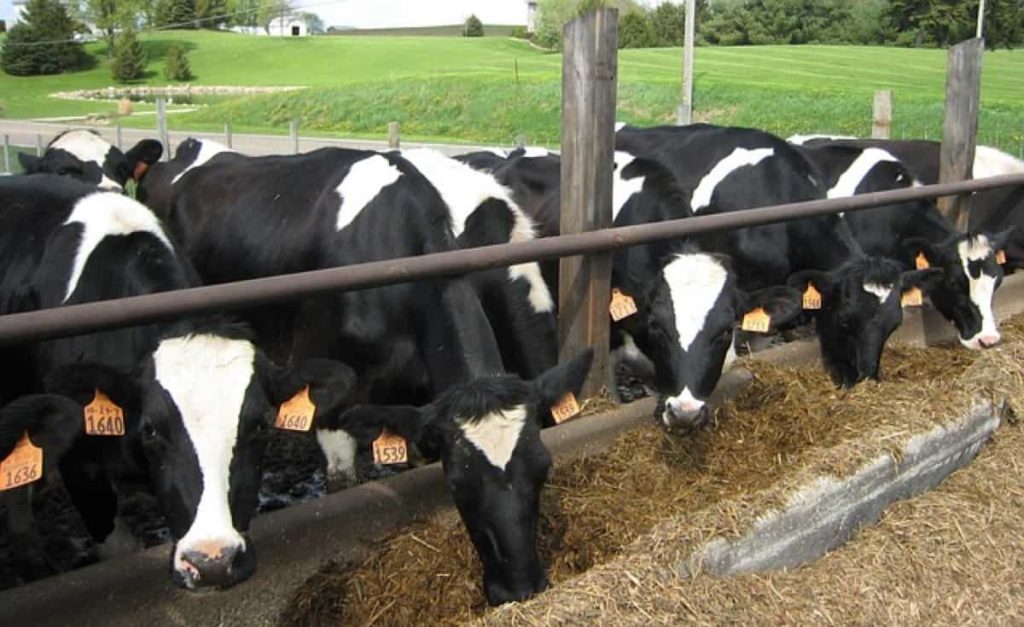
Dairy farming is a particularly important branch of agriculture in Switzerland, generating one-third of its income. Dairy products, including milk, yogurt, and cheese, are an important part of the diet in Switzerland. Milk production in Switzerland is characterized by small structures. The average farm has 24 hectares and 24 cows with milk production of 5,700 kg per cow per year. However, the productive structures in Switzerland are quite diverse about half of the grassland is an alpine pasture where the fields are smaller than the valley areas.
Milk production
Milk production is the most important branch of Switzerland’s agricultural industry. This is because Switzerland has a lot of grasslands and thus enough fodder for the cows. There are about 20,000 dairy farmers in Switzerland, raising a total of about 560,000 cows, producing about 4 billion kilograms of milk annually. The number of dairy cows has decreased in recent years, but milk production has remained stable as milk production per cow has increased at the same time.
The yield per cow is about 7000 kg of milk per year. A Swiss cow produces 20 to 35 kg of milk daily depending on its breed and age. Milk can be used to make many products. In Switzerland, cheese production is particularly important. Milk processors also produce drinking milk, butter, cream, yogurt, and other dairy products. For example, some milk is processed into safe milk products such as condensed milk or powdered milk.
In case you miss this: Dairy Farming In Indonesia: How to Start, Industry, Market, and Breeds
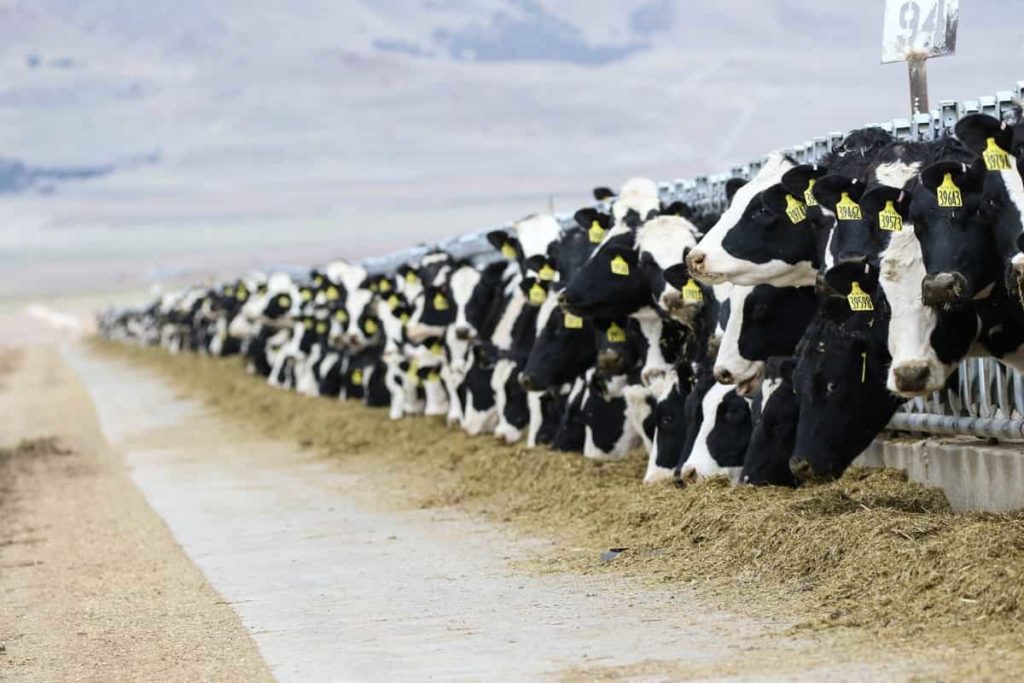
Switzerland is known worldwide for its high-quality cheese. As a result, cheese is the most important export product of the Swiss agricultural industry. The diversity of plants, along with rain and sunlight, means that Swiss milk has traditionally been richer and tastier than milk from flatter farming regions. To give 1 liter of milk to a cow, it needs at least 2 liters of water and 4 kg of fresh grass.
Business plan
Before opening any potential business, it is important to prepare a dairy business plan. A dairy business plan can be made keeping in mind many factors, the most important of which are market needs. The main goal is to serve the customers, and it is worthwhile to study the target area where you want to set up a dairy farm. Some important factors in a business plan include geography, household types, income, location culture, etc.
Based on all these factors, the below choices should be included in your business plan;
- The type of dairy animal you want to keep, such as cow, buffalo, goat, etc.
- Number of dairy animals – 10, 15, 20, 25, etc.
- The facilities you want to include – breastfeeding facility, winter facility, housing facility, etc.
Purchasing machinery
The important dairy farm machinery depends on the size of your dairy farm. The dairy farm equipment is divided into two broad categories;
- Milk processing equipment – Tanks, Separators, Pasteurizers, Homogenizers, Milking Machines.
- Farm equipment – Generator, fodder truck, pressure washer, fodder block machine, fodder compacting press, milking cans, feed grinder, etc.
Dairy feed management in Switzerland
Swiss cows eat mainly Swiss coarse fodder, which is abundant in Switzerland. Improving animal health with better management and better nutrition will help reduce production losses. Dairy cows eat fodder which is 92% Swiss, consisting mainly of grass, hay, herbs, or corn (86%). Natural fodder suitable for cattle, coarse fodder is plentiful in Switzerland.
In case you miss this: Equipment Needed for Dairy Farming: Small Dairy Machinery Details
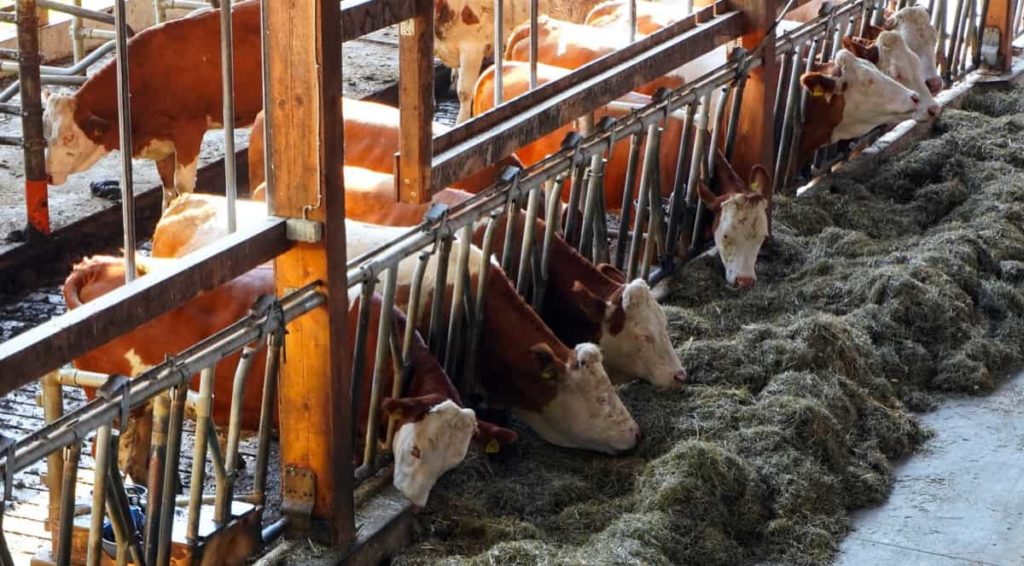
Swiss roughage meets four-fifths of the nutritional needs of cows. A cow eats 70 to 80 kg of indigenous grass daily and 15 to 20 kg of hay in winter. Corn and silage are the second-largest food in the Swiss province. In general, fodder in Switzerland must be free of food from genetically modified plants and animals.
Switzerland’s climate, soil, and topography are ideal for grass production, also known as roughage. That is why the whole cultural landscape is characterized by meadows and pastures. The grass is the main food of ruminants like cows, sheep, and goats. They turn it into meat or milk. About 86% of the feed given to Swiss dairy cows is malnutrition.
Breed selection and vaccination
A good cow breed should be selected to give more milk. In addition, to control diseases and protect the health of cows, their caretaker should have a strict vaccination schedule. Vaccinating animals helps stimulate the immune response without causing disease. It causes skin exposure to disease-causing organisms, where the animal’s immune system can remember the infectious agent that causes the animal to be vaccinated.
Swiss dairy companies
- Emmi AG
- Nestlé
- Von Mühlenen
Dairy breeds in Switzerland
Cattle breeds
Swiss Holstein – Swiss Holstein cows are important for their high milk performance and milk quantity according to the market. Other properties include rapid milk and early maturity. The functional type has played an important role in breeding for decades, resulting in tightly connected nipples, right legs, and feet, great potential, and strength. This is one reason why Swiss Holstein cattle have gained prominence in Europe in recent years. They have won or are at the top of many European Championships, regardless of the size of their population. That is why they have become so popular around the world, despite the huge competition.
Swiss Fleckvieh – Swiss Fleckvieh is a red and white spotted cross between a Red Holstein and a Simmental. This is a dual-purpose milk-producing breed. The Swiss Fleckvieh is a medium-sized, well-balanced, high-yielding dairy cow, ideal for sustainable and efficient production in many configurations. Swiss Fleckvieh breeding relies on long-lived cow families with good health properties and udders. Ideal for cow pasture and organic farming. They are known for their strong functional characteristics.
Simmental – Simmental comes from Bernice Oberland. From here, the dual-purpose breed is established globally and is one of the most important breeds in the world. It has a bright red and white coat.
Jersey cow – The Jersey cow is a particularly handsome breed with slender stature and dark-eyed eyes. Its milk contains more protein than any other dairy breed.
In case you miss this: Dairy Farming in Denmark, Breeds, How to Start
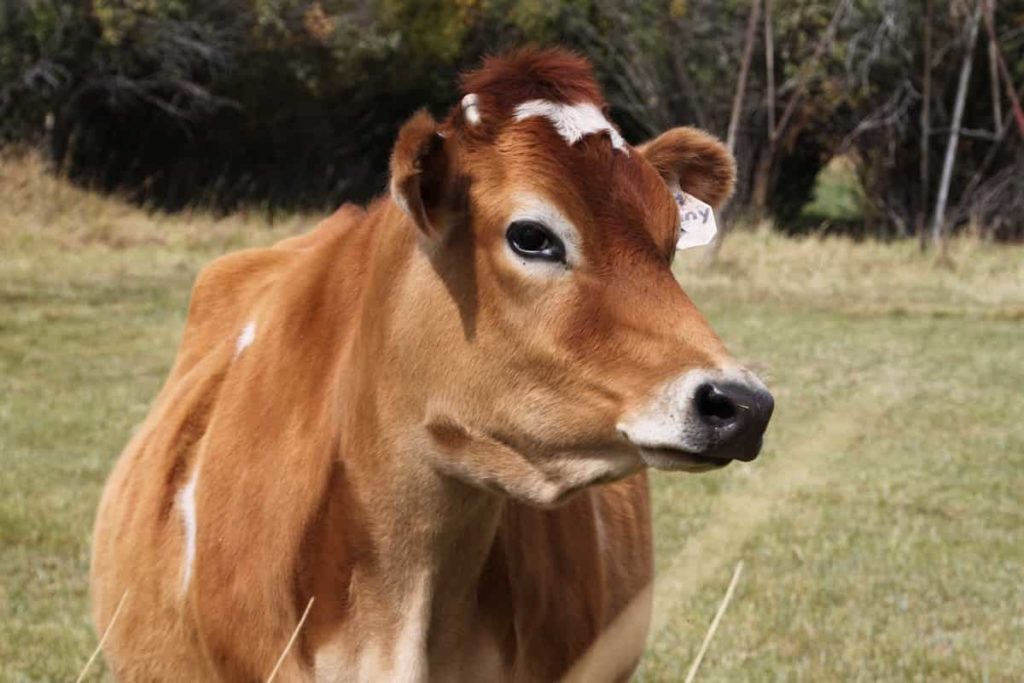
Switzerland Brown or Braunvieh – Braunvieh or Swiss Brown is a breed or group of domestic cattle that originated in Switzerland and spread throughout the Alpine region. Switzerland is the country of origin of Braunvieh (“brown cattle”). It is suitable for the production of both milk and meat. Today, most Braunvieh in Switzerland cross again with Brown Swiss genetics from the United States. This is because of their high milk production.
Évolène cattle – Évolène cattle is an older breed of dairy cattle from Valais Canton, Switzerland. This is a breed of endangered cattle.
Fribourgeoise – Fribourgeoise or Freiburger was a Swiss breed of cattle from the Canton of Freiburg in western Switzerland. It has been systematically crossbred with imported Holstein stock since about 1966.
Hérens cattle – Herens is a breed of cattle named after the Val d’Hérens region of Switzerland. These small, horned alpine cattle are black, brown, or dark red, often with a light stripe along the spine.
Rätisches Grauvieh – Rätisches Grauvieh is an endangered Swiss breed of cattle from Graubünden in eastern Switzerland. This is a small breed of Alpine Gray cattle, the Tiroler Grauvieh breed.
In case you miss this: Dairy Farm Insurance in India, Companies, Policy, and Premium
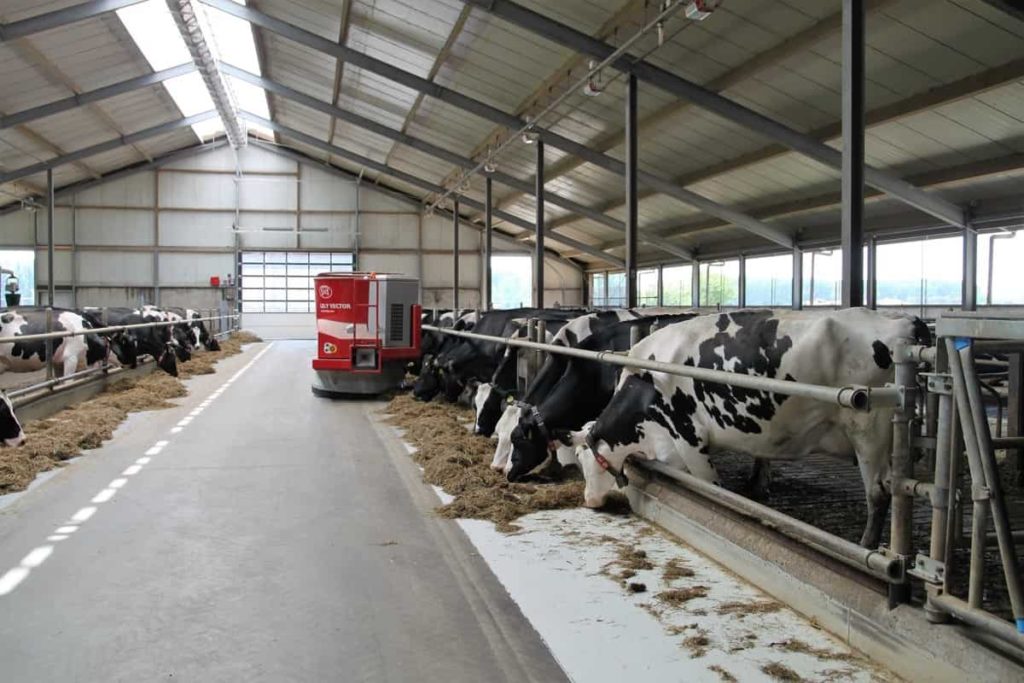
Simmental cattle or Swiss Fleckvieh – This is a Swiss breed of dual-purpose cattle. Simmental is a non-difficult, long-lasting dual-purpose breed with good milk and beef performance. It is especially suitable for large-scale farming. Simmental cattle are known for their good adaptability to grazing and their ability to perform well in difficult production and management conditions, which result in really high protein yields.
Simmental is a breed originating from Switzerland. Thanks to a strong selection and this area of Berner Oberland (mountainous region), it has evolved into a flexible dual-purpose breed with excellent fitness characteristics.
Goat breeds
Popular breeds of Swiss goats include the Saanen goat, the Toggenburg goat, and the Chamois-colored Mountain goat. The white, short-haired Saanen goat is suitable for milk production. It originates in the Saanenland and Obersimmental regions.
The Toggenburg goat is also a dairy breed. This breed is characterized by long hair on its back and thighs. Chamois-colored Mountain goats, which also give good milk yields, are the most registered animals in the herd book. It is brownish-black and thus resembles it – as the name implies – a chamois.
In addition to important breeds, Switzerland is also home to endangered breeds of goats. These include Appenzell Goat, Bündner Strahlenziege, Nera Verzasca, Valais Blackneck and Peacock Goat. There are also imported breeds known in Switzerland, such as the Anglo-Nubian, the Boer goat, and the Tauernscheck.
Switzerland’s Grisons Striped goat breed adapts well to mountain landscapes. Breeders are in the process of selective breeding to improve milk production. In Switzerland, Peacock goat breeds from the cantons of Graubünden and Upper Tessin are used for milk production.
In case you miss this: How this Farmer Made 5 Lakh Profit From His Goat Farm – A Success Story
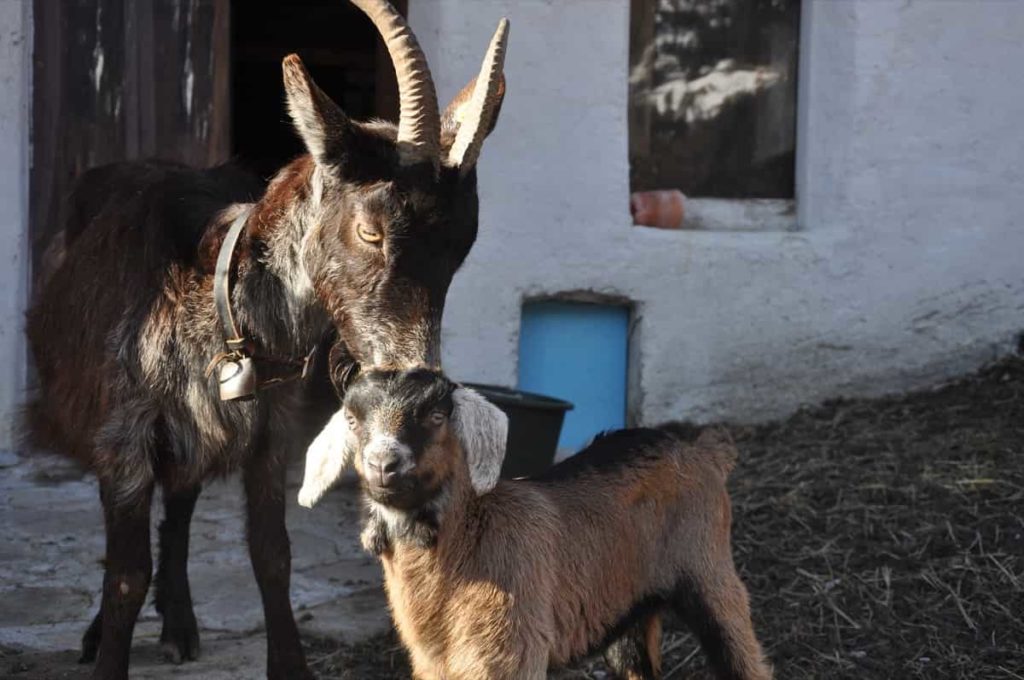
Animal husbandry as an important factor for dairy farming in Switzerland
Only healthy cows give high-quality milk. Raising has a key effect on animal health. Switzerland has the strictest animal welfare laws. Both legislation and voluntary agricultural programs for animal protection ensure the welfare of animals in Switzerland. About 48% of all dairy cows live in a specially designed housing system for animals. Switzerland is the clear winner in terms of animal welfare in a Europe-wide comparison.
- How to Make Houseplants Bushy: Effective Tips and Ideas
- Innovative Strategies for Boosting Coconut Pollination and Yield
- Pollination Strategies for Maximum Pumpkin Yield
- The Complete Guide to Chicken Fattening: Strategies for Maximum Growth
- Natural Solutions for Tulip Problems: 100% Effective Remedies for Leaf and Bulb-Related Issues
- Revolutionizing Citrus Preservation: Towards a Healthier, Greener Future
- Natural Solutions for Peony Leaf and Flower Problems: 100% Effective Remedies
- Maximizing Profits with Avocado Contract Farming in India: A Comprehensive Guide
- Natural Solutions for Hydrangea Problems: 100% Effective Remedies for Leaf and Flowers
- The Ultimate Guide to Choosing the Perfect Foliage Friend: Bringing Life Indoors
- From Sunlight to Sustainability: 15 Ways to Use Solar Technology in Agriculture
- The Ultimate Guide to Dong Tao Chicken: Exploring from History to Raising
- The Eco-Friendly Makeover: How to Convert Your Unused Swimming Pool into a Fish Pond
- Mastering the Art of Delaware Chicken Farming: Essentials for Healthy Backyard Flocks
- 20 Best Homemade Fertilizers for Money Plant: DIY Recipes and Application Methods
- How to Craft a Comprehensive Free-Range Chicken Farming Business Plan
- Brighten Your Flock: Raising Easter Egger Chickens for Beauty and Bounty
- How to Optimize Your Poultry Egg Farm Business Plan with These Strategies
- Subsidy for Spirulina Cultivation: How Indian Government Schemes Encouraging Spirulina Farmers
- Ultimate Guide to Raising Dominique Chickens: Breeding, Feeding, Egg-Production, and Care
- Mastering the Art of Raising Jersey Giant Chickens: Care, Feeding, and More
- Ultimate Guide to Raising Legbar Chickens: Breeding, Farming Practices, Diet, Egg-Production
- How to Raise Welsummer Chickens: A Comprehensive Guide for Beginners
- How to Protect Indoor Plants in Winter: A Comprehensive Guide
- Ultimate Guide to Grow Bag Gardening: Tips, Tricks, and Planting Ideas for Urban Gardeners
- Guide to Lotus Cultivation: How to Propagate, Plant, Grow, Care, Cost, and Profit
- Agriculture Drone Subsidy Scheme: Government Kisan Subsidy, License, and How to Apply Online
- Ultimate Guide to Raising Araucana Chickens: Breed Profile, Farming Economics, Diet, and Care
- Bringing Hydroponics to Classroom: Importance, Benefits of Learning for School Students
- Ultimate Guide to Raising Polish Chickens: Breed Profile, Farming Economics, Diet, and Care
- Ultimate Guide to Raising Australorp Chickens: Profile, Farming Economics, Egg Production, Diet, and Care
- Silkie Chicken Farming: Raising Practices, Varieties, Egg Production, Diet, and Care
- Sussex Chicken Farming: Raising Practices, Varieties, Egg Production, Diet and Care
- Homemade Feed Formulations for Livestock: Discover Cost-effective Starter to Finisher Feed Recipes
- 20 Best Pig Weight Gain Supplements: Top Swine Weight Gain Formulas
- Ultimate Guide to Elderberry Farming: Propagation, Planting, Yield, Cost, and Profit